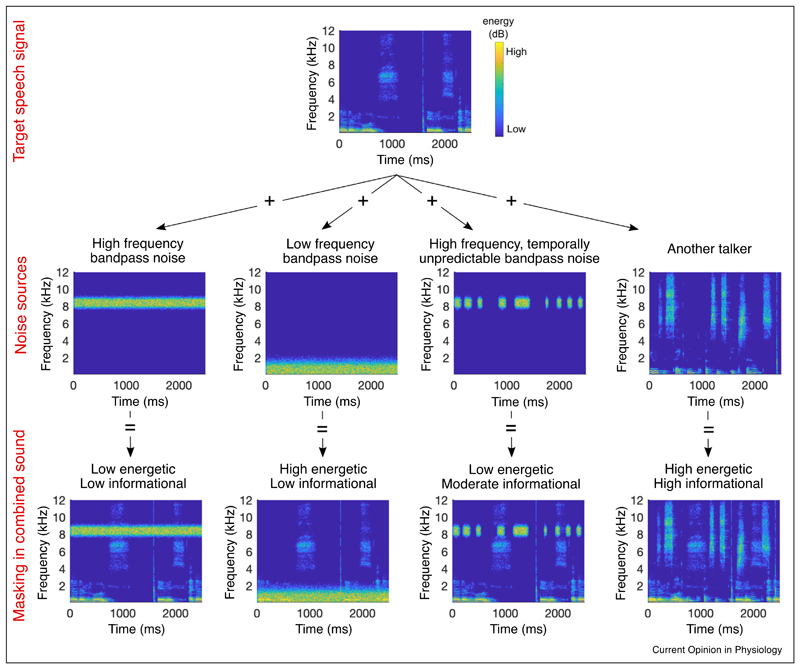Figure 1.
Energetic and informational masking of speech. The spectrogram of a speech stream of interest is shown in the top panel. The spectrograms of four example noise sources are shown in the middle row. Spectrograms of the mixtures of the target speech stream and each noise are shown in the bottom row. A steady-state, high-frequency bandpass noise provides less energetic masking of the speech (column 1) than a similar noise with a lower frequency band (column 2), as most of the energy in the speech is low frequency. Reducing the temporal predictability of the noise increases the informational masking (column 3), as the listener’s attention is captured by the noise and the auditory system cannot as easily adapt to it. The unpredictable noise will therefore be more disruptive to speech intelligibility even though it provides less energetic masking than the noise sources in the two left columns. Finally, the speech of a second person talking provides high amounts of energetic and informational masking (column 4), making it more difficult to segregate and attend to the target speech.

